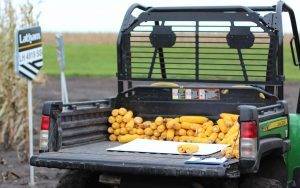 Webster’s Dictionary defines “risk” in many ways, including a chance that an investment will lose value or something that creates a hazard.
Webster’s Dictionary defines “risk” in many ways, including a chance that an investment will lose value or something that creates a hazard.
No matter how one defines risk, it’s a reality of production agriculture. Each decision farmers make comes with varying degrees of risk. That’s why it’s helpful to take an annual inventory of details in your own crop production. Bottom line: Check your production-limiting factors to set yourself up for success.
“Trust but verify,” is a famous quote by President Ronald Regan that appeals to my data-driven personality. This quote applies to crop production because now is a good time to verify that the seed corn you ordered early is the right hybrid for the majority soil type on the field in which you will plant it. Now is also a good time to ensure you have enough genetic diversity in your crop plan. On page 12 of Latham Seeds 2019 Product Guide, there is a corn placement chart to help you verify that the genetics you have selected for that soil type is the best fit.
Margins are super tight, and we’re looking for ways to cut costs. If we cut fertility, we risk losing potential yield. Many researchers suggest that up to 60% of yield is dependent upon fertility. If we plant inferior genetics, or place the genetics on the wrong soil type, we run the risk of yield reduction. While this is a review for most, my point is that plant genetics are critical to managing risk.
Understanding – and acknowledging – the depth of the genetics will pay dividends. I’m a very big believer in planting agronomically-stable products on a percentage of your acres. As margins thin, I look for hybrids with proven stability. I know each farmer has his or her own beliefs, but one thing we have in common is that we’re all trying to manage risk.
Some risks are outside our control, but we can reduce risk with our input choices.
- Disease– Select hybrids with superior disease resistance, especially to foliar leaf diseases, if you aren’t planning on investing in a foliar fungicide.
- Drought– Plant a portfolio of seed products, including planting a percentage of your total acres to a hybrid with unapparelled drought tolerance. It’s about building a system of risk management and finding that delicate balance of hybrids to give you the best “team” possible.
- Fertility– Some hybrids use nutrients more efficiently than others. Suggestions are shown in the Latham® product guide, and you can talk with your Regional Sales Manager (RSM).
My hope is that you go into the spring planting season with a sense of confidence, knowing you have done the best job you could with product selection, product placement, fertility and planting conditions. Have a little fun this season and remember to take care of yourself, too!
